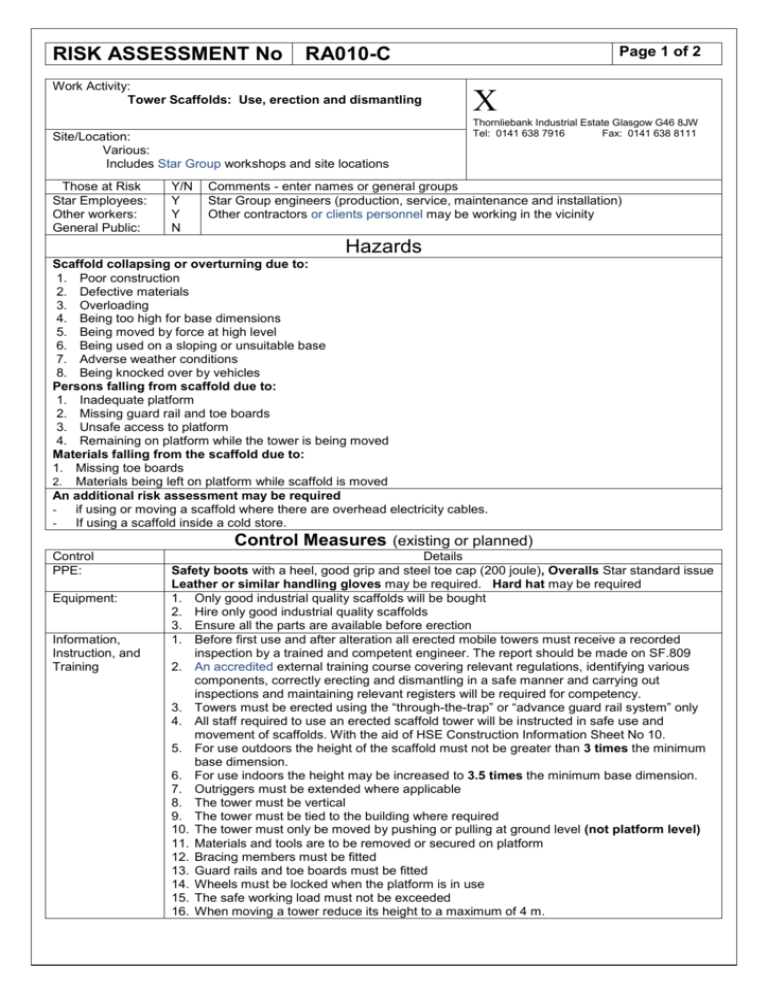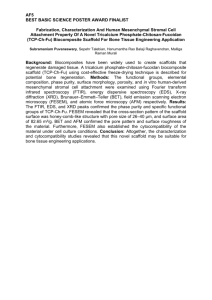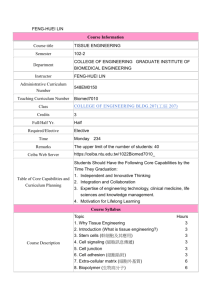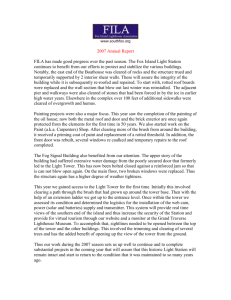Tower Scaffolds
advertisement

RISK ASSESSMENT No Work Activity: Tower Scaffolds: Use, erection and dismantling Site/Location: Various: Includes Star Group workshops and site locations Those at Risk Star Employees: Other workers: General Public: Y/N Y Y N Page 1 of 2 RA010-C Thornliebank Industrial Estate Glasgow G46 8JW Tel: 0141 638 7916 Fax: 0141 638 8111 Comments - enter names or general groups Star Group engineers (production, service, maintenance and installation) Other contractors or clients personnel may be working in the vicinity Hazards Scaffold collapsing or overturning due to: 1. Poor construction 2. Defective materials 3. Overloading 4. Being too high for base dimensions 5. Being moved by force at high level 6. Being used on a sloping or unsuitable base 7. Adverse weather conditions 8. Being knocked over by vehicles Persons falling from scaffold due to: 1. Inadequate platform 2. Missing guard rail and toe boards 3. Unsafe access to platform 4. Remaining on platform while the tower is being moved Materials falling from the scaffold due to: 1. Missing toe boards 2. Materials being left on platform while scaffold is moved An additional risk assessment may be required - if using or moving a scaffold where there are overhead electricity cables. - If using a scaffold inside a cold store. Control Measures (existing or planned) Control PPE: Equipment: Information, Instruction, and Training Details Safety boots with a heel, good grip and steel toe cap (200 joule), Overalls Star standard issue Leather or similar handling gloves may be required. Hard hat may be required 1. Only good industrial quality scaffolds will be bought 2. Hire only good industrial quality scaffolds 3. Ensure all the parts are available before erection 1. Before first use and after alteration all erected mobile towers must receive a recorded inspection by a trained and competent engineer. The report should be made on SF.809 2. An accredited external training course covering relevant regulations, identifying various components, correctly erecting and dismantling in a safe manner and carrying out inspections and maintaining relevant registers will be required for competency. 3. Towers must be erected using the “through-the-trap” or “advance guard rail system” only 4. All staff required to use an erected scaffold tower will be instructed in safe use and movement of scaffolds. With the aid of HSE Construction Information Sheet No 10. 5. For use outdoors the height of the scaffold must not be greater than 3 times the minimum base dimension. 6. For use indoors the height may be increased to 3.5 times the minimum base dimension. 7. Outriggers must be extended where applicable 8. The tower must be vertical 9. The tower must be tied to the building where required 10. The tower must only be moved by pushing or pulling at ground level (not platform level) 11. Materials and tools are to be removed or secured on platform 12. Bracing members must be fitted 13. Guard rails and toe boards must be fitted 14. Wheels must be locked when the platform is in use 15. The safe working load must not be exceeded 16. When moving a tower reduce its height to a maximum of 4 m. RISK ASSESSMENT No Page 2 of 2 RA010-C Control Measures Continued Control Supervision: Environment; Procedures, documents etc Emergency action/procedures Access: Details 1. Department Managers will ensure that there are an adequate number of trained tower erectors for their needs. 2. Department Managers will ensure that all mobile tower scaffolds are inspected before first use and thereafter every seven days by a competent trained erector and a record of the inspection made on SF.809 which must be kept for three months. 1. The tower must not be used or moved on sloping, uneven or obstructed surfaces 2. The floor must be free from openings, ducts, steps, etc. 3. Overhead obstructions are to be noted (in particular, overhead electricity cables) 4. The tower must not be used outside in adverse weather conditions. 1. Any defect in scaffold equipment must be reported and attended to immediately. 1. 2. 1. 2. Any accident or incident involving mobile tower scaffolds will be investigated. Scaffold collapse is a reportable dangerous occurrence under RIDDOR No person can remain on the platform whilst it is being moved. The area around the base of the mobile tower scaffold must be barriered-off when the tower is in use in pedestrian or vehicular thoroughfares. Risk Evaluation of Identified Hazards Likelihood Highly unlikely = 1 Unlikely = 2 Likely = 3 Severity Slightly harmful = 1 Harmful = 2 Extremely harmful = 3 (Likelihood x Severity = Risk level) 1 = Trivial, 2 = Tolerable, 3-4 = Moderate, 6 = Substantial, 9 = Intolerable Identified Hazards (base scores on existing or planned control measures) Triv' Tol' Mod' Sub' Int' Scaffold collapsing or overturning due to: 1. Poor construction 2. Defective materials 3. Overloading 4. Being too high for base dimensions 5. Being moved by force at high level 6. Being used on a sloping or unsuitable base 7. Adverse weather conditions 8. Being knocked over by vehicles Persons falling from scaffold due to: 1. Inadequate platform 2. Missing guard rail and toe boards 3. Unsafe access to platform 4. Remaining on platform while the tower is being moved Materials falling from the scaffold due to: 1. Missing toe boards 2. Materials being left on platform while scaffold is moved 1x2 1x2 1x2 1x2 1x2 1x2 1x1 1x3 2 2 2 2 2 2 1 3 3 3 3 3 1x3 1x3 1x3 1x3 1x2 1x2 2 2 Note: Moderate scores; Thought should be given to reducing risk, but the cost and time requirements of prevention should be carefully considered and limited. Substantial: Work should not be started until the risk has been reduced, for work in progress, urgent action is required. Considerable resources may have to be allocated. Intolerable: If unlimited resources cannot reduce risk, work will be prohibited. YES Is risk adequately controlled using the above control measures Y/N If "NO" State further action required State further action required: Note : This risk assessment is only valid when all control measures are in place before the work or activity commences and will be reviewed 23/03/2013 or earlier if the nature of the work changes or there is a dangerous occurrence. Assessor: C. Haslam (Sign) References: HSE Construction information sheet No 10, www.hse.gov.uk/pubns/cis10.pdf HS(G) 150 Health and Safety in Construction Date 23.3.2012








